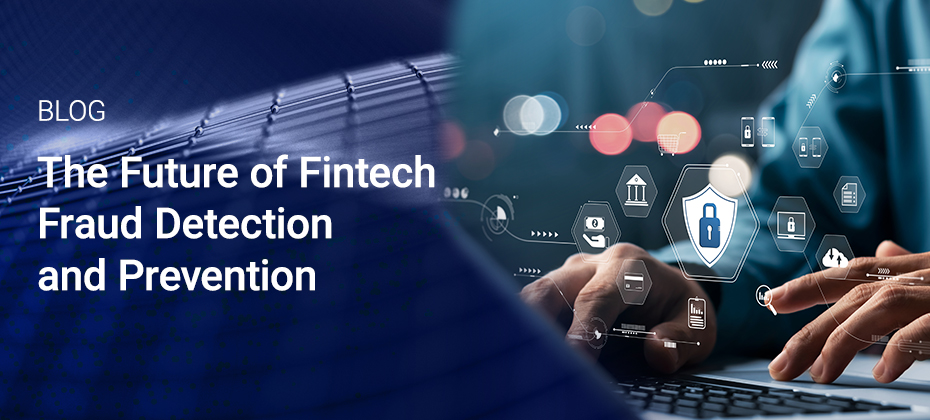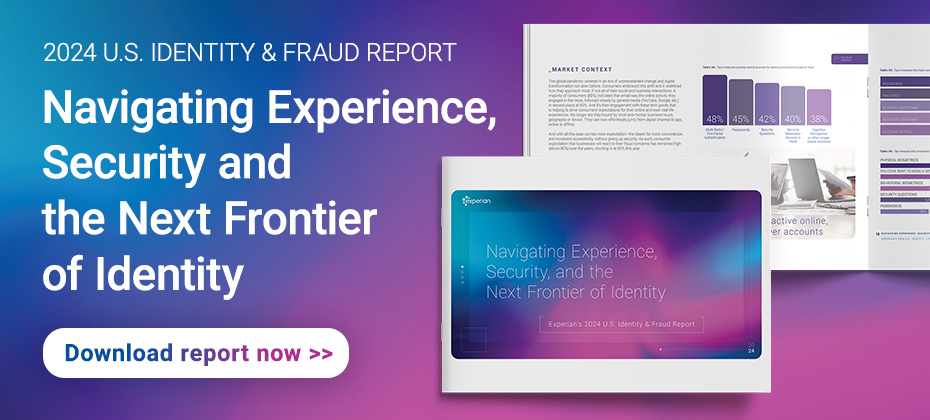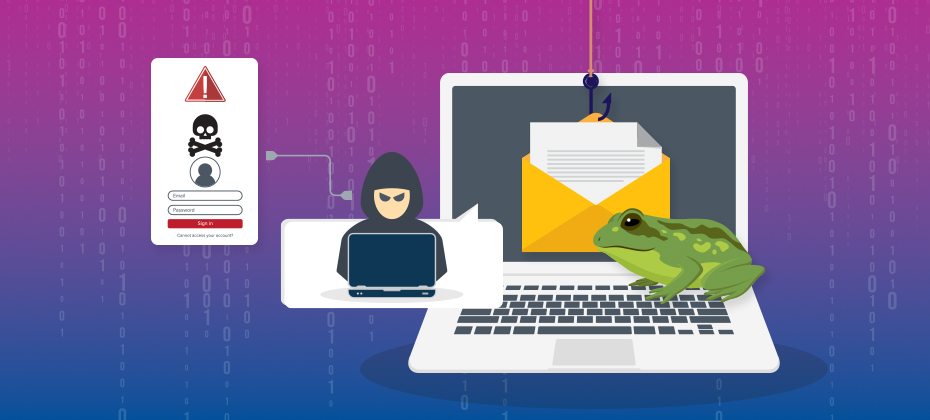Tag: fraud prevention

The digital domain is rife with opportunities, but it also brings substantial risks, especially for organizations. Among the innovative tools that have risen to prominence for fraud detection and online security is browser fingerprinting. Whether you're looking to minimize security gaps or bolster your fraud prevention strategy, understanding how this technology works can provide a significant advantage in today’s ever-evolving fraud and identity landscape. This article explores the concept, functionality, and applications of browser fingerprinting while also examining its benefits and relevance for organizations. How does browser fingerprinting work? Browser fingerprinting is a powerful technology designed to collect unique identifying information about a user’s web browser and device. By compiling data points such as browser type, operating system, time zone, and installed plugins, browser fingerprinting creates a distinct profile — or "fingerprint"— that allows websites to recognize returning users without relying on cookies. Here’s a breakdown of its key steps: Data collection: When a user visits a website, their browser sends information, such as user-agent strings or metadata, to the website's servers. This data provides insights about their browser, device, and system. Fingerprint creation: The collected information is processed to generate a unique ID or fingerprint, representing the user's specific configuration. Tracking and analyzing: These fingerprints enable websites to track and analyze user behavior, detect anomalies, and identify users without relying on traditional tracking mechanisms like cookies. For organizations, employing technology that leverages such fingerprints adds an additional layer to identity verification, detecting discrepancies that may indicate fraud attempts. What are the different techniques? Not all browser fingerprinting methods are identical; varying approaches offer different strengths. The most common techniques used today include: Canvas fingerprinting: This method utilizes the "Canvas" element in HTML5. When a website sends a command to draw a hidden image on a user's device, the way the image is rendered reveals unique characteristics about the device's graphics hardware and software. Font fingerprinting: Font fingerprinting involves analyzing the fonts installed on a user's system. Since computers and browsers render text in slightly different ways based on their configurations, the resulting variations aid in identifying users. Plugin enumeration: Browsers and devices often come equipped with plugins or extensions like Flash or Java. Analyzing which plugins are installed, their versions, and their order helps websites build unique fingerprints. What are the benefits of browser fingerprinting? For organizations, browser fingerprinting is not just a technical marvel — it’s a strategic asset. Benefits include: Enhanced fraud detection: Browser fingerprinting detects inconsistencies within user accounts, flagging unauthorized logins, synthetic identity fraud, or account takeover fraud without introducing significant friction for legitimate users. By identifying patterns that deviate from the norm, organizations can better prepare for malicious activities. Learn more about addressing account takeover fraud. Supports multi-layered security: A single security measure often isn't enough to combat advanced fraudulent schemes. Browser fingerprinting pairs seamlessly with other fraud management tools, such as behavioral analytics and risk-based authentication, to provide robust security. See how behavioral analytics can help organizations spot and stop next-generation fraud bots. Seamless user experience: Unlike cookies or authentication codes, browser fingerprinting operates passively in the background. Users remain unaware of the process, ensuring their experience is unaffected while still maintaining security. Level up with Experian's fraud prevention tools Browser fingerprinting offers organizations a game-changing tool to secure online interactions. However, given the growing complexity of fraud threats, organizations will need additional layers of insights and protection. Experian offers integrated, AI-driven fraud prevention solutions tailor-made to tackle challenges in the digital space. By leveraging advanced technologies like browser fingerprinting alongside Experian’s solutions, organizations can safeguard their operations and uphold customer trust while maintaining a frictionless user experience. Learn more about our fraud prevention solutions This article includes content created by an AI language model and is intended to provide general information.

Despite being a decades-old technology, behavioral analytics is often still misunderstood. We’ve heard from fraud, identity, security, product, and risk professionals that exploring a behavior-based fraud solution brings up big questions, such as: What does behavioral analytics provide that I don’t get now? (Quick answer: a whole new signal and an earlier view of fraud) Why do I need to add even more data to my fraud stack? (Quick answer: it acts with your stack to add insights, not overload) How is this different from biometrics? (Quick answer: while biometrics track characteristics, behavioral analytics tracks distinct actions) These questions make sense — stopping fraud is complex, and, of course, you want to do your research to fully understand what ROI any tool will add. NeuroID, now part of Experian, is one of the only behavioral analytics-first businesses built specifically for stopping fraud. Our internal experts have been crafting behavioral-first solutions to detect everything from simple script fraud bots through to generative AI (genAI) attacks. We know how behavioral analytics works best within your fraud stack, and how to think strategically about using it to stop fraud rings, bot fraud, and other third-party fraud attacks. This primer will provide answers to the biggest questions we hear, so you can make the most informed decisions when exploring how our behavioral analytics solutions could work for you. Q1. What is behavioral analytics and how is it different from behavioral biometrics? A common mistake is to conflate behavioral analytics with behavioral biometrics. But biometrics rely on unique physical characteristics — like fingerprints or facial scans — used for automated recognition, such as unlocking your phone with Face ID. Biometrics connect a person’s data to their identity. But behavioral analytics? They don’t look at an identity. They look at behavior and predict risk. While biometrics track who a person is, behavioral analytics track what they do. For example, NeuroID’s behavioral analytics observes every time someone clicks in a box, edits a field, or hovers over a section. So, when a user’s actions suggest fraudulent intent, they can be directed to additional verification steps or fully denied. And if their actions suggest trustworthiness? They can be fast-tracked. Or, as a customer of ours put it: "Using NeuroID decisioning, we can confidently reject bad actors today who we used to take to step-up. We also have enough information on good applicants sooner, so we can fast-track them and say ‘go ahead and get your loan, we don’t need anything else from you.’ And customers really love that." - Mauro Jacome, Head of Data Science for Addi (read the full Addi case study here). The difference might seem subtle, but it’s important. New laws on biometrics have triggered profound implications for banks, businesses, and fraud prevention strategies. The laws introduce potential legal liabilities, increased compliance costs, and are part of a growing public backlash over privacy concerns. Behavioral signals, because they don’t tie behavior to identity, are often easier to introduce and don’t need the same level of regulatory scrutiny. The bottom line is that our behavioral analytics capabilities are unique from any other part of your fraud stack, full-stop. And it's because we don’t identify users, we identify intentions. Simply by tracking users’ behavior on your digital form, behavioral analytics powered by NeuroID tells you if a user is human or a bot; trustworthy or risky. It looks at each click, edit, keystroke, pause, and other tiny interactions to measure every users’ intention. By combining behavior with device and network intelligence, our solutions provide new visibility into fraudsters hiding behind perfect PII and suspicious devices. The result is reduced fraud costs, fewer API calls, and top-of-the-funnel fraud capture with no tuning or model integration on day one. With behavioral analytics, our customers can detect fraud attacks in minutes, instead of days. Our solutions have proven results of detecting up to 90% of fraud with 99% accuracy (or <1% false positive rate) with less than 3% of your population getting flagged. Q2. What does behavioral analytics provide that I don’t get now? Behavioral analytics provides a net-new signal that you can’t get from any other tools. One of our customers, Josh Eurom, Manager of Fraud for Aspiration Banking, described it this way: “You can quantify some things very easily: if bad domains are coming through you can identify and stop it. But if you see things look odd, yet you can’t set up controls, that’s where NeuroID behavioral analytics come in and captures the unseen fraud.” (read the full Aspiration story here) Adding yet another new technology with big promises may not feel urgent. But with genAI fueling synthetic identity fraud, next-gen fraud bots, and hyper-efficient fraud ring attacks, time is running out to modernize your stack. In addition, many fraud prevention tools today only focus on what PII is submitted — and PII is notoriously easy to fake. Only behavioral analytics looks at how the data is submitted. Behavioral analytics is a crucial signal for detecting even the most modern fraud techniques. Watch our webinar: The Fraud Bot Future-Shock: How to Spot and Stop Next-Gen Attacks Q3. Why do I need to add even more data to my fraud stack? Balancing fraud, friction, and financial impact has led to increasingly complex fraud stacks that often slow conversions and limit visibility. As fraudsters evolve, gaps grow between how quickly you can keep up with their new technology. Fraudsters have no budget constraints, compliance requirements, or approval processes holding them back from implementing new technology to attack your stack, so they have an inherent advantage. Many fraud teams we hear from are looking for ways to optimize their workflows without adding to the data noise, while balancing all the factors that a fraud stack influences beyond overall security (such as false positives and unnecessary friction). Behavioral analytics is a great way to work smarter with what you have. The signals add no friction to the onboarding process, are undetectable to your customers, and live on a pre-submit level, using data that is already captured by your existing application process. Without requiring any new inputs from your users or stepping into messy biometric legal gray areas, behavioral analytics aggregates, sorts, and reviews a broad range of cross-channel, historical, and current customer behaviors to develop clear, real-time portraits of transactional risks. By sitting top-of-funnel, behavioral analytics not only doesn’t add to the data noise, it actually clarifies the data you currently rely on by taking pressure off of your other tools. With these insights, you can make better fraud decisions, faster. Or, as Eurom put it: “Before NeuroID, we were not automatically denying applications. They were getting an IDV check and going into a manual review. But with NeuroID at the top of our funnel, we implemented automatic denial based on the risky signal, saving us additional API calls and reviews. And we’re capturing roughly four times more fraud. Having behavioral data to reinforce our decision-making is a relief.” The behavioral analytics difference Since the world has moved online, we’re missing the body language clues that used to tell us if someone was a fraudster. Behavioral analytics provides the digital body language differentiator. Behavioral cues — such as typing speed, hesitation, and mouse movements — highlight riskiness. The cause of that risk could be bots, stolen information, fraud rings, synthetic identities, or any combination of third-party fraud attack strategies. Behavioral analytics gives you insights to distinguish between genuine applicants and potentially fraudulent ones without disrupting your customer’s journey. By interpreting behavioral patterns at the very top of the onboarding funnel, behavior helps you proactively mitigate fraud, reduce false positives, and streamline onboarding, so you can lock out fraudsters and let in legitimate users. This is all from data you already capture, simply tracking interactions on your site. Stop fraud, faster: 5 simple uses where behavioral analytics shine While how you approach a behavioral analytics integration will vary based on numerous factors, here are some of the immediate, common use cases of behavioral analytics. Detecting fraud bots and fraud rings Behavioral analytics can identify fraud bots by their frameworks, such as Puppeter or Stealth, and through their behavioral patterns, so you can protect against even the most sophisticated fourth-generation bots. NeuroID provides holistic coverage for bot and fraud ring detection — passively and with no customer friction, often eliminating the need for CAPTCHA and reCAPTCHA. With this data alone, you could potentially blacklist suspected fraud bot and fraud ring attacks at the top of the fraud prevention funnel, avoiding extra API calls. Sussing out scams and coercions When users make account changes or transactions under coercion, they often show unfamiliarity with the destination account or shipping address entered. Our real-time assessment detects these risk indicators, including hesitancy, multiple corrections, and slow typing, alerting you in real-time to look closer. Stopping use of compromised cards and stolen IDs Traditional PII methods can fall short against today’s sophisticated synthetic identity fraud. Behavioral analytics uncovers synthetic identities by evaluating how PII is entered, instead of relying on PII itself (which is often corrupted). For example, our behavioral signals can assess users’ familiarity with the billing address they’re entering for a credit card or bank account. Genuine account holders will show strong familiarity, while signs of unfamiliarity are indicators of an account under attack. Detecting money mules Our behavioral analytics solutions track how familiar users are with the addresses they enter, conducting a real-time, sub-millisecond familiarity assessment. Risk markers such as hesitancy, multiple corrections, slow typing speed raise flags for further exploration. Stopping promotion and discount abuse Our behavioral analytics identifies risky versus trustworthy users in promo and discount fields. By assessing behavior, device, and network risk, we help you determine if your promotions attract more risky than trustworthy users, preventing fraudsters from abusing discounts. Learn more about our behavioral analytics solutions. Learn more Watch webinar

As online accounts become essential for activities ranging from shopping and social media to banking, "account farming" has emerged as a significant fraud risk. This practice involves creating fake or unauthorized accounts en masse, often for malicious purposes. Understanding how account farming works, why it’s done and how businesses can protect themselves is crucial for maintaining data integrity, safeguarding customer trust and protecting your bottom line. How does account farming work? Account farming is the process of creating and cultivating multiple user accounts, often using fake or stolen identities. These accounts may look like legitimate users, but they’re controlled by a single entity or organization, usually with fraudulent intent. Here’s a breakdown of the typical steps involved in account farming: Identity generation: Account farmers start by obtaining either fake or stolen personal information. They may buy these datasets on the dark web or scrape publicly available information to make each account seem legitimate. Account creation: Using bots or manual processes, fraudsters create numerous accounts on a platform. Often, they’ll employ automated tools to expedite this process, bypassing CAPTCHA or reCAPTCHA systems or using proxy servers to mask their IP addresses and avoid detection. Warm-up phase: After initial creation, account farmers often let the accounts sit for a while, engaging in limited, non-suspicious activity to avoid triggering security alerts. This “warming up” process helps the accounts seem more authentic. Activation for fraudulent activity: Once these accounts reach a level of credibility, they’re activated for the intended purpose. This might include spamming, fraud, phishing, fake reviews or promotional manipulation. Why is account farming done? There are several reasons account farming has become a widespread problem across different industries. Here are some common motivations: Monetary gain: Fraudsters use farmed accounts to commit fraudulent transactions, like applying for loans and credit products, accessing promotional incentives or exploiting referral programs. Spam and phishing: Fake accounts enable widespread spam campaigns or phishing attacks, compromising customer data and damaging brand reputation. Data theft: By creating and controlling multiple accounts, fraudsters may access sensitive data, leading to further exploitation or resale on the dark web. Manipulating metrics and market perception: Some industries use account farming to boost visibility and credibility falsely. For example, on social media, fake accounts can be used to inflate follower counts or engagement metrics. In e-commerce, fraudsters may create fake accounts to leave fake reviews or upvote products, falsely boosting perceived popularity and manipulating purchasing decisions. How does account farming lead to fraud risks? Account farming is a serious problem that can expose businesses and their customers to a variety of risks: Financial loss: Fake accounts created to exploit promotional offers or referral programs can cause victims to experience significant financial losses. Additionally, businesses can incur costs from chargebacks or fraudulent refunds triggered by these accounts. Compromised customer experience: Legitimate customers may suffer from poor experiences, such as spam messages, unsolicited emails or fraudulent interactions. This leads to diminished brand trust, which is costly to regain. Data breaches and compliance risks: Account farming often relies on stolen data, increasing the risk of data breaches. Businesses subject to regulations like GDPR or CCPA may face hefty fines if they fail to protect consumer information adequately. READ MORE: Our Data Breach Industry Forecast predicts what’s in store for the coming year. How can businesses protect themselves from account farming fraud? As account farming tactics evolve, businesses need a proactive and sophisticated approach to detect and prevent these fraudulent activities. Experian’s fraud risk management solutions provide multilayered and customizable solutions to help companies safeguard themselves against account farming and other types of fraud. Here’s how we can help: Identity verification solutions: Experian’s fraud risk and identity verification platform integrates multiple verification methods to confirm the authenticity of user identities. Through real-time data validation, businesses can verify the legitimacy of user information provided at the account creation stage, detecting and blocking fake identities early in the process. Its flexible architecture allows companies to adapt their identity verification process as new fraud patterns emerge, helping them stay one step ahead of account farmers. Behavioral analytics: One effective way to identify account farming is to analyze user behavior for patterns consistent with automated or scripted actions (AKA “bots”). Experian’s behavioral analytics solutions, powered by NeuroID, use advanced machine learning algorithms to identify unusual behavioral trends among accounts. By monitoring how users interact with a platform, we can detect patterns common in farmed accounts, like uniform interactions or repetitive actions that don’t align with human behavior. Device intelligence: To prevent account farming fraud, it’s essential to go beyond user data and examine the devices used to create and access accounts. Experian’s solutions combine device intelligence with identity verification to flag suspicious devices associated with multiple accounts. For example, account farmers often use virtual machines, proxies or emulators to create accounts without revealing their actual location or device details. By identifying and flagging these high-risk devices, we help prevent fraudulent accounts from slipping through the cracks. Velocity checks: Velocity checks are another way to block fraudulent account creation. By monitoring the frequency and speed at which new accounts are created from specific IP addresses or devices, Experian’s fraud prevention solutions can identify spikes indicative of account farming. These velocity checks work in real-time, enabling businesses to act immediately to block suspicious activity and minimize the risk of fake account creation. Continuous monitoring and risk scoring: Even after initial account creation, continuous monitoring of user activity helps to identify accounts that may have initially bypassed detection but later engage in suspicious behavior. Experian’s risk scoring system assigns a fraud risk score to each account based on its behavior over time, alerting businesses to potential threats before they escalate. Final thoughts: Staying ahead of account farming fraud Preventing account farming is about more than just blocking bots — it’s about safeguarding your business and its customers against fraud risk. By understanding the mechanics of account farming and using a multi-layered approach to fraud detection and identity verification, businesses can protect themselves effectively. Ready to take a proactive stance against account farming and other evolving fraud tactics? Explore our comprehensive solutions today. Learn More This article includes content created by an AI language model and is intended to provide general information.

The advent of artificial intelligence (AI) is significantly transforming the landscape of real estate fraud, enabling criminals to execute complex schemes like deed theft with greater ease. A notable case involves Spelling Manor, a $137.5 million mansion in Los Angeles, where the owner alleges they are entangled in deed fraud. Scammers reportedly filed fraudulent documents that have prevented the owner from selling the estate, thwarting offers from buyers, including former Google CEO Eric Schmidt. Understanding deed/title fraud Deed fraud, also known as title or property fraud, occurs when someone illegally transfers ownership of a property without the owner’s knowledge or consent. Typically, fraudsters create fake documents or forge the owner’s signature on a deed to make it look like the property has been legally transferred to them. Once the title is in their name, they may try to sell or mortgage the property, leaving the original owner unaware until it’s too late. How deed fraud works Identify a target: Fraudsters often look for properties that appear vulnerable, such as vacant land, unoccupied homes, or properties owned by elderly individuals who may not check their records frequently. Forge documentation: Using fake IDs and forged signatures, scammers create documents that appear to show a legitimate transfer of ownership. With modern technology, these documents can look highly convincing. Record the fake deed: Fraudsters then file these documents with the local county clerk or recorder’s office. This officially changes the ownership records, making it seem as if the scammer is the legitimate owner. Exploit the ownership: Once listed as the owner, the fraudster may sell the property to an unsuspecting buyer, take out loans against it, or even rent it out. The impact on victims In the summer of 2024, Elvis Presley’s family got confronted to a forged deed scam. A fake firm, Naussany Investments, falsely claimed Lisa Marie Presley owed millions and used Graceland as collateral. They placed a foreclosure notice and attempted to auction the estate. Riley Keough filed a lawsuit, exposing the firm as fraudulent and halting the foreclosure through a judge’s injunction. Lisa Jeanine Findley, who forged documents and posed as firm employees, was arrested and charged with deed forgery fraud and identity theft. She faces up to 22 years in prison if convicted. The FBI's Internet Crime Complaint Center does not specifically monitor deed fraud. However, in 2023, it processed a total of 9,521 real estate-related complaints defined as the loss of funds from a real estate investment, resulting in more than $145 million in losses. Victims of deed fraud can face severe financial and legal issues. They may discover the fraud only when trying to sell, refinance, or even pay taxes on the property. Reversing deed fraud typically requires a costly and time-consuming legal process, as courts must determine that the transfer was fraudulent and restore the original owner’s rights. Prevention and safeguards There are several preventive measures and fraud prevention solutions that can be established to help mitigate the risks associated with deed/title fraud. These include: For lending institutions: Enhanced ID verification: Implement multi-factor identity checks at the loan approval stage. Regular portfolio audits: Conduct periodic audits to detect unusual property transfers and title changes in their loan portfolios. For title companies: AI-driven document verification tools: Use machine learning algorithms to identify inconsistencies in deed and ownership documents. Real-time fraud monitoring: Employ analytics to track suspicious behavior patterns, such as rapid ownership changes. Seller authentication: Require biometric or multi-step identity verification for anyone claiming ownership or initiating sales. For realtors: Training and awareness: Educate realtors on how to spot warning signs of fraudulent listings and seller impersonations. Pre-transaction verification: Collaborate with title companies to validate ownership early in the listing process. Acting with the right solution Mortgage fraud is a constant threat that demands ongoing vigilance and adaptability. As fraudsters evolve their tactics, the mortgage industry must stay one step ahead to safeguard homeowners and lenders alike. With concerns over deed/title-related fraud rising, it is vital to raise awareness, strengthen preventive measures, and foster collaboration to protect the integrity of the mortgage market. By staying informed and implementing robust safeguards, we can collectively combat and prevent mortgage fraud from disrupting the financial security of individuals and the industry. Experian mortgage powers advanced capabilities across the mortgage lifecycle by gaining market intelligence, enhancing customer experience to remove friction and tapping into industry leading data sources to gain a complete view of borrower behavior. Visit our website to see how these solutions can help your business prevent deed fraud. Learn more

In 2023, mobile fraud attacks surged by over 50%.1 With people relying more on mobile devices for day-to-day activities, like banking, shopping and healthcare, fraudsters have found new ways to exploit mobile security. With phones housing such sensitive data, how can businesses ensure that the person on the other end of a mobile device is who they claim to be? Enter mobile identity verification, a process designed to protect consumers and businesses in today’s mobile-driven world. Understanding mobile identity Mobile identity refers to the digital identity associated with a mobile device. This includes information like phone numbers, SIM cards, device IDs and user credentials that uniquely identify a person or device. Verifying that the mobile identity belongs to the correct individual is crucial for secure digital transactions. What is mobile identity verification? Mobile identity verification confirms the legitimacy of users accessing services via their mobile device. This process uses personal data, biometrics and mobile network information to authenticate identity, ensuring businesses interact with real customers without unnecessary friction. Why is mobile identity verification important? The rise of mobile banking, mobile payments and other mobile-based services has increased the need for robust security measures. Cybercriminals have found ways to exploit the mobile ecosystem through SIM swapping, phishing and other fraud tactics. This makes mobile identity verification critical for businesses looking to protect sensitive customer data and prevent unauthorized access. Here are some of the key reasons why mobile identity verification is essential: Preventing fraud: Identity theft and fraud are major concerns for businesses and consumers alike. Mobile identity verification helps to reduce the risk of fraud by ensuring that the user is who they say they are. Enhancing user trust: Customers are more likely to trust a service that prioritizes their security. Businesses that implement mobile identity verification solutions provide an extra layer of protection, which can help build customer confidence. Regulatory compliance: Many industries, including finance and healthcare, are subject to strict regulations concerning data privacy and security. Mobile identity verification helps businesses meet these regulatory requirements by offering a secure way to verify customer identities. Improving user experience: While security is essential, businesses must also ensure that they do not create a cumbersome user experience. Mobile identity verification solutions offer a quick and seamless way for users to verify their identities without sacrificing security. This is especially important for onboarding new users or completing transactions quickly. How does mobile identity verification work? Mobile identity verification involves a combination of different techniques and technologies, depending on the service provider and the level of security required. Some common methods include: Biometric authentication: Biometrics like fingerprint scans, facial recognition and voice recognition are becoming increasingly popular for verifying identities. These methods are secure and convenient for users since they don't require remembering passwords or PINs. SMS-based verification: One-time passwords (OTPs) sent via SMS to a user's mobile phone are still widely used. This method links the verification process directly to the user's mobile device, ensuring that they have possession of their registered phone number. Device-based verification: By analyzing the unique identifiers of a mobile device, such as IMEI numbers, businesses can confirm that the device is registered to the user attempting to access services. This helps prevent fraud attempts from unregistered or stolen devices. Mobile network data: Mobile network operators have access to valuable information, such as the user’s location, SIM card status and network activity. By leveraging this data, businesses can further verify that the user is legitimate and actively using their mobile network as expected. Behavioral analytics: By analyzing patterns in user behavior — such as typing speed, navigation habits, and interactions with apps — mobile identity verification solutions can detect anomalies that might indicate fraudulent activity. For instance, if a user’s behavior demonstrates low-to-no familiarity with the PII they provide, it can trigger an additional layer of verification to ensure security. The role of identity solutions in mobile identity verification Mobile identity verification is just one part of a broader range of identity solutions that help businesses authenticate users and protect sensitive data. These solutions not only cover mobile devices but extend to other digital touchpoints, ensuring that organizations have a holistic, multilayered approach to identity verification across all channels. Companies that provide comprehensive identity verification solutions can help organizations build robust security infrastructures while offering seamless customer experiences. For instance, Experian offers cutting-edge solutions designed to meet the growing demand for secure and efficient identity verification and authentication. These solutions can significantly reduce fraud and improve customer satisfaction. The growing importance of digital identity In the digital age, managing and verifying identities extends beyond traditional physical credentials like driver’s licenses or social security numbers. Digital identity plays an essential role in enabling secure online transactions, personalizing user experiences and protecting individuals' privacy. However, with great convenience comes great responsibility. Businesses need to strike a balance between security and personalization to ensure they protect user data while still offering a smooth customer experience. As mobile identity verification becomes more widespread, it’s clear that safeguarding digital identity is more important than ever. To learn more about the importance of digital identity and how businesses can find the right balance between security and personalization, check out this article: Digital identity: finding the balance between personalization and security. How Experian can help Experian is at the forefront of providing innovative identity verification solutions that empower businesses to protect their customers and prevent fraud. With solutions tailored for mobile identity verification, businesses can seamlessly authenticate users while minimizing friction. Experian’s technology integrates behavioral analytics, device intelligence and mobile network data to create a comprehensive and secure identity verification process. Whether you’re looking for a complete identity verification solution or need specialized mobile identity verification services, Experian’s identity verification and authentication solutions offer the solutions and expertise your organization needs to stay secure in the evolving digital landscape. Learn More 1 Kapersky This article includes content created by an AI language model and is intended to provide general information.

In this article...Understanding the scope of fintech fraudThe importance of fintech fraud preventionSynthetic identity (ID) fraud: A growing threatHow fintech fraud detection and prevention are evolvingGet started today The integration of technology with traditional financial services has unlocked unprecedented convenience and opportunities for consumers and businesses alike. However, this digital shift has opened the door for more sophisticated fraud tactics. With fraudsters continuously refining their methods, fintech companies must invest in advanced fintech fraud detection and prevention solutions. Understanding the scope of fintech fraud As fintech platforms expand, they also attract the attention of cybercriminals. The accessibility of digital financial services can create vulnerabilities that fraudsters exploit, executing everything from personal account takeovers to larger-scale breaches involving synthetic identities. Source: Experian’s 2024 U.S. Identity & Fraud Report To counter these threats, fintech companies must deploy innovative fraud management solutions powered by artificial intelligence (AI), machine learning (ML), and advanced analytics. Unlike traditional methods that often rely on static rules and manual reviews, these solutions can process vast amounts of data, learn from historical patterns, and detect anomalies in real-time. This allows organizations to identify suspicious activities before they lead to significant losses. The importance of fintech fraud prevention While detecting fraud is crucial, preventing it from occurring in the first place is even more important. Fraud prevention solutions aim to create robust systems that stop fraudsters in their tracks before they can cause damage. With the rise of digital financial services, the need for proactive fraud prevention measures has never been greater. These solutions protect both consumers and businesses from financial harm, reducing the risk of financial loss and reputational damage. Advanced fraud prevention solutions employ multi-layered strategies, combining AI-driven fraud detection tools with methods such as multifactor authentication and biometric identity verification. These tools create an extra layer of security, making it difficult for fraudsters to access sensitive data or execute fraudulent transactions. Experian’s fraud prevention solutions offer businesses a comprehensive suite of tools designed to prevent various types of fraud. From real-time transaction monitoring to sophisticated user authentication methods, these solutions provide the protection businesses need to stay ahead of evolving fraud tactics. Synthetic identity (ID) fraud: A growing threat One of the most concerning forms of fraud that fintech companies face is synthetic ID fraud. This type of fraud involves the creation of a fake identity using a combination of real and fabricated information. Fraudsters often steal pieces of personal data—such as Social Security numbers or addresses—and then combine them with fictional information to create a new, synthetic identity. These synthetic identities can be used to open bank accounts, apply for credit cards, or take out loans, leaving businesses and consumers vulnerable to significant financial losses. Synthetic ID fraud is particularly difficult to detect because the synthetic identity often looks legitimate to traditional verification systems. As a result, fintech companies must deploy sophisticated fraud detection systems that can identify synthetic identities before they’re used to commit fraud. Machine learning algorithms, for instance, can analyze behavioral data, detecting discrepancies that may indicate a synthetic identity. Experian is ranked #1 by the Center for Financial Professionals (CeFPro®) for Identity and Fraud. The ranking appeared in CeFPro’s Fintech Leaders Report, a comprehensive annual study of the fintech industry. How fintech fraud detection and prevention are evolving As fraudsters continue to evolve their tactics, fintech companies must remain one step ahead by investing in cutting-edge fraud detection and prevention technologies. Real-time monitoring, predictive analytics, and biometrics are just a few of the technologies shaping the future of fraud detection. By integrating these technologies into their fraud management processes, fintech companies can offer a more secure and seamless experience for their users. With the acquisition of NeuroID, an industry leader in behavioral analytics, Experian has amplified its fraud risk suite by providing a new layer of insight into digital behavioral signals and analytics. Available through our fraud solutions on the Experian Ascend Technology PlatformTM, clients can proactively monitor and analyze a user’s real-time digital behavior, allowing them to confidently navigate the online landscape and provide frictionless customer experiences. Get started today As the fraud landscape continues to evolve, fintech companies must adopt comprehensive solutions to stay ahead of emerging threats. By doing so, they can protect themselves and their customers, ensuring the continued success of digital financial services in the years to come. To learn more, check out our fraud management and fintech solutions. Fraud management solutions Fintech solutions This article includes content created by an AI language model and is intended to provide general information. In this article...

In today’s digital age, call center fraud is a growing threat that businesses can no longer afford to ignore. As fraudsters become increasingly sophisticated, it’s crucial for companies to implement robust security measures to protect both their operations and their consumers. Various forms of call center fraud can have a significant impact on businesses. To prevent this, companies can use effective strategies including multifactor authentication solutions and account takeover prevention techniques. But first, what is call center fraud? Understanding call center fraud Call center fraud occurs when fraudsters exploit vulnerabilities in customer service operations to gain unauthorized access to sensitive information and commit identity theft. This type of fraud can take many forms, including social engineering, which occurs when a fraudster manipulates a call center agent into providing information or access, and phishing, which occurs when fraudsters use deceptive tactics to obtain confidential details from unsuspecting individuals. One of the most concerning tactics used by fraudsters is impersonation, or pretending to be legitimate consumers to gain access to accounts. Once they have access, they can make unauthorized transactions, change account details, or even take over the account entirely—a scenario known as an account takeover. The impact of these fraudulent activities can be devastating, leading to significant financial losses, damage to brand reputation, and a loss of consumer trust. Key strategies for preventing call center fraud According to recent research, account takeover fraud has increased by 330% in the past two years, projecting to cost $6.24 billion globally.[1] In addition, the number of U.S. consumers who have experienced account takeover has increased from 22% in 2021 to 29% in 2023.[2] To effectively combat call center fraud, businesses must adopt a multi-layered approach that includes advanced technological solutions, comprehensive employee training, and real-time monitoring. Here are some of the most effective strategies: 1. Implementing multifactor authentication (MFA) solutions One of the most effective ways to secure consumer interactions is by implementing multifactor authentication (MFA) solutions. MFA requires users to provide two or more verification factors to gain access to an account or complete a transaction. This adds an extra layer of security, making it significantly more difficult for fraudsters to succeed even if they have obtained some of the consumer’s information. MFA can be integrated into call center operations in several ways. For example, businesses can use voice recognition as a biometric factor, requiring consumers to verify their identity through a unique voiceprint. Other methods include sending a one-time code via text message, which the consumer must provide during the call, or using mobile app verification, where consumers approve transactions directly through their smartphones. 2. Account takeover prevention Account takeover is one of the most serious threats to call centers, as they involve fraudsters gaining control of a consumer’s account, often with disastrous consequences. To prevent account takeover, businesses can employ a combination of technological solutions and best practices. First, understanding what account takeover entails is crucial. It typically begins when a fraudster obtains some of the consumer’s personal information—often through phishing, social engineering, or a data breach. They then use this information to impersonate the consumer and convince call center agents to provide them with access to the account. To combat this, businesses can employ several account takeover prevention techniques. Anomaly detection systems can flag unusual activities, such as login attempts from unfamiliar locations or devices, prompting additional verification steps. Behavioral biometrics is another powerful tool, analyzing patterns in how users interact with their devices to detect inconsistencies that may indicate fraud. Continuous authentication, where the system continuously verifies the user’s identity throughout the session, is also effective in catching fraudsters in the act. 3. Training and awareness Technology alone may not be enough to entirely prevent call center fraud—human factors are equally important. Regular training for call center staff is essential to ensure team members can recognize and respond to potential fraud attempts. Employees should be trained to identify common tactics used by fraudsters, such as social engineering, and to follow strict verification procedures before providing any sensitive information. Awareness campaigns can also play a significant role in preventing fraud. Internally, companies should run regular campaigns to remind employees of the importance of adhering to security protocols. Externally, educating consumers about the risks of fraud and encouraging them to use security features like MFA can help reduce the likelihood of successful attacks. 4. Real-time monitoring and analytics Real-time monitoring is a critical component of an effective fraud prevention strategy. By continuously monitoring calls and transactions, businesses can quickly identify and respond to suspicious activities before they escalate. Advanced analytics tools, including voice analytics and behavior analysis, can provide valuable insights into potential fraud, allowing companies to take proactive measures. Voice analytics, for instance, can detect stress or hesitation in a caller’s voice, which may indicate that they are not who they claim to be. Behavior analysis can track how consumers typically interact with their accounts, flagging deviations from the norm as potential fraud. Continuous improvement is key here—regularly reviewing and updating monitoring protocols ensures that businesses stay ahead of evolving threats. Preventing call center fraud in your business By using a multi-layered fraud approach through a variety of authentication solutions, your business can quickly detect call center fraud without disrupting your consumers’ experience. Identify the risk Identity-based risk detection can pinpoint when a specific identity may be in the hands of fraudsters. Device intelligence solutions can recognize the risk associated with a specific device used to attempt online access. Address the risk Knowledge-based authentication (KBA) can quickly authenticate users by asking questions only they can answer, which can deter fraudsters. MFA services can generate and deliver a one-time password to a consumer’s mobile device to verify their identity in real time. Document verification allows your business to collect and verify images of identity documents uploaded from a consumer’s mobile device. Protect your business and your consumers from call center fraud Call center fraud is a significant threat that requires a proactive and comprehensive approach to prevention. By implementing strategies such as multifactor authentication solutions, account takeover prevention techniques, and robust employee training, businesses can significantly reduce their risk of falling victim to fraud. In today’s fast-paced digital world, staying vigilant and proactive is the key to safeguarding your call center against fraud. Act now to protect your business and maintain the trust of your consumers. Enable your call center to detect risk quickly and effectively with our robust fraud prevention solutions. Get started Download our identity and fraud report This article includes content created by an AI language model and is intended to provide general information. [1] Worldmetrics.org, Account Takeover Statistics: Losses to Reach $6.24 Billion Globally, 2024. [2] Security.org, Account Takeover Incidents are Rising: How to Protect Yourself in 2024.

Fraud-as-a-Service (FaaS) represents an emerging and increasingly sophisticated business model within cybercrime. In this model, malicious actors commercialize their expertise, tools, and infrastructure, enabling others to perpetrate fraud more easily and efficiently. These FaaS offerings are often accessible via dark web marketplaces or underground forums, streamlining and automating fraud processes, such as large-scale phishing campaigns. This enables the creation of convincing counterfeit websites and the distribution of bulk emails, allowing cybercriminals to harvest credentials and personal information en masse. Organized cybercrime syndicates leverage account creation bots to establish hundreds of fraudulent accounts across various platforms, bypassing standard security protocols and scaling their illicit activities seamlessly. A fraudster no longer requires deep technical skills or detailed knowledge of complex verification techniques, such as liveness detection. Instead, they can acquire turnkey FaaS solutions that, for instance, inject pre-recorded video footage to spoof verification processes, enabling the rapid creation of thousands of fraudulent accounts. The commoditization of fraud has effectively democratized it, lowering the barriers to entry. Previously accessible to a select few, FaaS has developed sophisticated techniques and is now available to a broader and less technically adept audience. Now, even individuals with basic computer skills can access these services and initiate fraudulent schemes with minimal effort. Key tools in the FaaS arsenal Central to the success of fraud-as-a-service is the ability to create fraudulent accounts while evading detection. This process can be alarmingly straightforward, even for companies adhering to industry-recognized best practices. Widely available programs, such as app cloners, enable fraudsters to generate multiple instances of the same application on a single device, modifying its source code to bypass security measures to detect such activities. The generalization of artifical intelligence (AI) and increased access to technology have provided cybercriminals with new tools to launch sophisticated scams, such as Pig Butchering and Authorized Push Payment (APP) scams. Similarly, image injection tools facilitate the insertion of manipulated images to deceive verification systems, while emulators simulate legitimate device activity at scale, making detection more challenging. Techniques such as location spoofing allow fraudsters to alter the perceived geographical location of a device, thereby evading location-based security checks and allowing their scams to remain undetected. Once fraudulent accounts are established, cybercriminals focus on monetizing their efforts. Industries like food delivery and ride-hailing are particularly vulnerable to promotional abuse. Fraudsters exploit promotional offers intended for new customers by using cloned apps, injected images, and emulators to create multiple fake accounts, redeem discounts, and resell them for profit. AI-driven automation and advanced communication technologies lower the barriers for these scams, enabling criminals to operate at a larger scale and with greater efficiency. This has made scams more pervasive and difficult for individuals and institutions to detect. In the ride-hailing industry, these tactics are used to manipulate fare structures and incentives. Fraudsters operate multiple driver or rider accounts on the same device to earn referral bonuses and other promotional rewards. Emulators can simulate rides with fabricated start and end points, while location spoofing tools manipulate GPS data, inflating fares, and earnings. Such fraudulent activities result in significant financial losses for companies and degrade service quality for legitimate users, as resources are diverted from genuine transactions and logistical algorithms are disrupted. The implications of FaaS for businesses The commercialization of fraud poses a substantial threat to businesses, not only by democratizing fraud but also by enabling it to rapidly scale. . Fraudsters can experiment with multiple schemes simultaneously, sharing feedback and accelerating their learning curve. A single tool developed by one individual can be deployed by numerous bad actors to perpetrate fraud on a large scale, with remarkable speed. This ease of execution allows fraudsters to overwhelm companies with a barrage of attacks, maximizing their financial gains while exacerbating the challenges of fraud prevention for targeted organizations. Developing a FaaS-Resilient fraud prevention strategy To effectively combat fraud-as-a-service, businesses must adopt AI fraud strategies that mirror the operational sophistication of fraudsters. These cybercriminals treat their activities as profitable enterprises, continually optimizing their return on investment through scalable and adaptable tactics. By deeply understanding the methodologies employed by fraudsters, companies can develop more effective fraud prevention measures that disrupt fraudulent operations without inconveniencing legitimate users. Proactive fraud prevention strategies are essential in countering FaaS tactics. Effective measures rely on robust data collection and analysis. Regular reviews of key performance indicators (KPIs) and velocity checks, which monitor the rate at which users complete transactions, can help identify irregular behaviors. Passive signals, such as device fingerprinting and location intelligence, are also invaluable in detecting suspicious activities. By scrutinizing data related to app tampering or device emulation, businesses can more accurately determine whether a genuine user is accessing their platform or if a fraudster is attempting to bypass detection. Given the dynamic nature of FaaS, adaptation is crucial. Fraud prevention strategies must evolve continually to keep pace with emerging threats. Advanced technologies offer nuanced insights into user behavior, enabling businesses to identify and thwart fraud attempts with greater precision. Moreover, cutting-edge risk monitoring tools can help avoid false positives, ensuring that legitimate users are not unduly impacted. As fraudsters persist in innovating and refining their tactics, organizations must remain vigilant, stay informed about emerging trends, invest in advanced fraud prevention and detection technologies, and cultivate a culture of security and awareness. While it may be tempting to underestimate fraudsters due to the illicit nature of their activities, it is important to recognize that many approach their work with a level of professionalism comparable to legitimate businesses. Understanding this reality offers valuable insights into how companies can effectively counteract fraud and protect their monetary interests. Learn more This article includes content created by an AI language model and is intended to provide general information.

Replay attacks may threaten your customers’ online security Today, consumer online security is more important than ever. This year, the FTC has already received nearly six million reports of fraud, and 1.4 million of those cases were specifically identity theft.[1] In addition, a recent study reported that losses due to identity fraud amounted to almost $23 billion in 2023.[2] And consumers aren’t the only ones at risk. According to CyberArk’s global research report, 93% of organizations had two or more identity-related breaches in the past year.[3] This means it’s not only up to consumers to protect themselves against identity theft. It’s also up to businesses to protect themselves and their customers from the threat of fraud. As security technology advances, so do the tactics of hackers attempting to steal information such as usernames, account numbers, and passwords from innocent online users. One method that hackers use to obtain this information is called a replay attack, which can pose a serious threat to your customers’ online security. What is a replay attack? A replay attack is a network-based security hack in which a hacker intercepts legitimate data transmission and then fraudulently repeats it to gain access to a network or system. These attacks are designed to fool the victim into believing the hacker is a genuine user, and they happen in three steps: Eavesdropping: The hacker listens in on secure network communications, such as information sent through a Virtual Private Network (VPN), to learn about the activity happening on that network. Interception: The hacker intercepts legitimate user information – usernames, user activity, computer specs, passwords, etc. Replay: The hacker illegally resends (or “replays”) the valid information they gathered to trick the receiver into thinking that they are a genuine user. Here’s an example: John transfers funds from one online banking account to another. A hacker illegally captures that transaction message (which is often accompanied by a digital signature or token) and “replays” that same transaction message multiple times to trigger additional fund transfers, all without the genuine user’s knowledge or permission. The bank doesn’t recognize a problem because the “replayed” transaction messages includes the legitimate digital signature/token, so the bank approves the additional transfers. Replay attacks aren’t just used for banking transactions. They can be used for various activities, such as: Internet of Things (IoT) device attacks: IoT devices include a multitude of “smart home” devices such as smart plugs, cameras, locks, appliances, speakers, lights, and more. Vulnerabilities in these devices can allow hackers to replicate commands to these devices that seem legitimate, such as turning on cameras, unlocking doors, and disabling security systems.[4] Remote keyless entry systems for vehicles: Most vehicles use a remote key fob to lock and unlock the doors. This key fob usually uses radio waves to send the lock/unlock signal to the car. Hackers can use a device to receive and transmit radio waves near a person’s vehicle that mimic that same lock/unlock signal, and then “replay” that signal to unlock the person’s car themselves.[5] Text-dependent speaker verification: Some people use voice recognition to verify their identity when accessing an account or system. Hackers can record a person’s voice when the person speaks to verify their identity, and then “replay” that voice recording to fraudulently access the account.[6] How to prevent replay attacks Replay attacks are dangerous because they are often unnoticed or overlooked until the damage has already been done. Fortunately, there are ways to stop hackers from using replay attacks to access your customers’ personal information. Device intelligence: By leveraging unique intelligence about the device being used, replay attacks can be thwarted even when fraudsters are using authentic, but stolen, information. Time stamping: By forcing a timestamp on all sent and received messages, you can prevent hackers from sending repeated messages with legitimate information obtained illegally. Geolocation review: By identifying suspicious language and/or time zones, you can compare access routes to confirm customers are authentic and secure. Why it matters for your business Consumers in the U.S. value network security more than ever, with 70% rating security a top priority, even over personalization and convenience.[7] People want to feel safe online, and if they experience a threat of identity theft or fraud, they’ll need to find a reliable resource to keep their personal information secure. Successful replay attacks allow fraudsters to impersonate real users and potentially gain partial or full access to their personal online accounts. If your customers fall victim to these kinds of attacks, the resulting stress may have a negative impact on your relationship with them. With our fraud management solutions, your business can strengthen your customers’ trust and security by leveraging highly trained fraud analysts to help uncover suspicious activity that might not be noticed otherwise. Lower fraud losses and achieve fraud capture rates that exceed industry averages. Protect your customers by using a covert, frictionless solution the reduces false positives. Improve operational efficiency by prioritizing resources across the board. Protect your consumers with powerful fraud management solutions 63% of consumers say it’s important for businesses to be able to recognize them online, and 81% say they are more trusting of businesses that can accomplish easy and accurate identification.[8] While replay attacks can cause consumers stress and anxiety, taking action to prevent them can fortify a strong, trusting relationship between your business and your customers. Protect your customers and prevent replay attacks with our powerful fraud management solutions. Get started [1] IdentityTheft.org, 2024 Identity Theft Facts and Statistics. [2] Javelin, 2024 Identity Fraud Study: Resolving the Shattered Identity Crisis. [3] CyberArk, Report: 93% of Organizations Had Two or More Identity-Related Breaches in the Past Year, May 2024. [4] Hackster.io, IoT Devices May Be Susceptible to Replay Attacks with a Raspberry Pi and RTL-SDR Dongle, 2017. [5] Automotive World, How to mitigate vulnerabilities in keyless entry systems, 2023. [6] Antispoofing, Audio Replay Attacks and Countermeasures Against Them, 2022. [7] 2018 Experian® Global Fraud Report [8] Experian® 2024 Identity and Fraud Report Highlights Evolving Fraud Landscape This article includes content created by an AI language model and is intended to provide general information.

Experian’s ninth annual report on identity and fraud highlights persistent worries among consumers and businesses about fraud, including growing threats from GenAI. In this report, we explore how the evolving fraud landscape is impacting identity verification, customer experience, and business priorities for the future. Our 2024 U.S. Identity and Fraud Report draws insights from surveys of over 2,000 U.S. consumers and 200 businesses. This year’s report dives into: Evolving consumer sentiment over security and experience Businesses’ investments to tackle growing fraud challenges Effective technology solutions to accurately identify and authenticate consumers The impact of GenAI on the fraud landscape To keep pace with the evolving landscape, businesses will need to apply a multi-faceted strategy that leverages multiple types of recognition and security to stop all types of fraud while allowing real customers through. To learn more about our findings and perspective, read the full 2024 U.S. Identity and Fraud Report, watch our on-demand webinar, or read the press release. Download Now Watch Webinar Read Press Release

Gen Z, or "Zoomers," born from 1997 to 2012, are molded by modern transformations. They have witnessed events from post-9/11 impacts to the rise of the internet and the COVID-19 crisis. As early adopters of technology, their lives are intertwined with smartphones, online shopping, social platforms, cloud services, emerging fintech, and artificial intelligence. They are called “digital natives” as they are the first generation to grow up with internet as part of their daily life. Research generally indicates that this post-millennial generation values practicality, favoring financial stability over entrepreneurial pursuits. They appreciate communication tailored to them and often employ social media to cultivate their personal brands. As a generation growing up immersed in technology, they tend to choose digital interactions, seeking to forge robust, secure, genuine, and unconstrained digital experiences. The challenge of identity verification Identity verification presents a considerable challenge for Generation Z. According to a Fortune survey, close to 50% of this demographic regrets not opening financial accounts earlier, citing a lack of readiness to join the financial ecosystem by the age of 18. Consequently, this has given rise to "digital ghosts"—people with minimal or nonexistent financial histories who face challenges when trying to utilize financial services. The 2009 Credit Card Accountability Responsibility and Disclosure Act mandates that individuals under 21 need a cosigner or show income proof to get a credit card, hindering their early financial involvement. Moreover, conventional identity checks are becoming less reliable due to the surge in identity theft. Innovative solutions for verifying Gen Z Verifying identities and preventing fraud among Gen Z presents unique challenges due to their digital-native status and limited credit histories. Here are some effective strategies and approaches that financial institutions can adopt to address these challenges: Leveraging alternative data sources Academic records leverage information from higher learning institutions such as universities, colleges, and vocational schools. This data can be vital for authenticating the identities of younger individuals who may lack a substantial credit history. Employment verification retrieve data confirming the identity and employment status, especially focusing on Gen Z who are new to the job market. Utility and telecom records leverage payment histories for utilities, phone bills, and other recurring services, which can provide additional layers of identity verification. Alternative financial data includes online small dollar lenders, online installment lenders, single payment, line of credit, storefront small dollar lenders, auto title and rent-to-own. Phone-Centric ID Phone-Centric Identity refers to technology that leverages and analyzes mobile, telecom, and other signals for the purposes of identity verification, identity authentication, and fraud prevention. Phone-Centric Identity relies on billions of signals from authoritative sources pulled in real time, making it a powerful proxy for digital identity and trust. Advance authentication technologies Behavioral biometrics analyze user behaviors such as typing patterns, navigation habits, and device usage. These subtle behaviors can help create a unique profile for each user, making it difficult for fraudsters to impersonate them. Adaptive risk-based authentication that adjusts the level of security based on the user's behavior, location, device, and other factors. For example, a higher level of verification might be required for transactions that are deemed unusual or high-risk. Real-time fraud detection AI and machine learning: Deploy AI and machine learning algorithms to analyze transaction patterns and detect anomalies in real-time. These technologies can identify suspicious activities and flag potential fraud. Fraud analytics: Use predictive analytics to assess the likelihood of fraud based on historical data and current behavior. This approach helps in proactively identifying and mitigating fraudulent activities. Secure digital onboarding Digital identity verification: Implement digital onboarding processes that include online identity verification with real-time document verification. Users can upload government-issued IDs and take selfies to confirm their identity. Video KYC (Know Your Customer): Use video calls to conduct KYC processes, allowing bank representatives to verify identities and documents remotely via automated identity verification. This method is secure and convenient for tech-savvy Gen Z customers. Make identity verification easy To authenticate identities and combat fraud within the Gen Z population, financial organizations need to implement a comprehensive strategy utilizing innovative technologies, non-traditional data, and strong protective protocols. Such actions will enable the creation of a trustworthy and frictionless banking environment that appeals to a generation adept in digital interactions, thereby establishing trust and encouraging enduring connections. To learn more about Experian’s automated identity verification solutions, visit our website. Learn more

In this article...What is credit card fraud?Types of credit card fraudWhat is credit card fraud prevention and detection?How Experian® can help with card fraud prevention and detection With debit and credit card transactions becoming more prevalent than cash payments in today’s digital-first world, card fraud has become a significant concern for organizations. Widespread usage has created ample opportunities for cybercriminals to engage in credit card fraud. As a result, millions of Americans fall victim to credit card fraud annually, with 52 million cases reported last year alone.1 Preventing and detecting credit card fraud can save organizations from costly losses and protect their customers and reputations. This article provides an overview of credit card fraud detection, focusing on the current trends, types of fraud, and detection and prevention solutions. What is credit card fraud? Credit card fraud involves the unauthorized use of a credit card to obtain goods, services or funds. It's a crime that affects individuals and businesses alike, leading to financial losses and compromised personal information. Understanding the various forms of credit card fraud is essential for developing effective prevention strategies. Types of credit card fraud Understanding the different types of credit card fraud can help in developing targeted prevention strategies. Common types of credit card fraud include: Card not present fraud occurs when the physical card is not present during the transaction, commonly seen in online or over-the-phone purchases. In 2023, card not present fraud was estimated to account for $9.49 billion in losses.2 Account takeover fraud involves fraudsters gaining access to a victim's account to make unauthorized transactions. In 2023, account takeover attacks increased 354% year-over-year, resulting in almost $13 billion in losses.3,4 Card skimming, which is estimated to cost consumers and financial institutions over $1 billion per year, occurs when fraudsters use devices to capture card information from ATMs or point-of-sale terminals.5 Phishing scams trick victims into providing their card information through fake emails, texts or websites. What is credit card fraud prevention and detection? To combat the rise in credit card fraud effectively, organizations must implement credit card fraud prevention strategies that involve a combination of solutions and technologies designed to identify and stop fraudulent activities. Effective fraud prevention solutions can help businesses minimize losses and protect their customers' information. Common credit card fraud prevention and detection methods include: Fraud monitoring systems: Banks and financial institutions employ sophisticated algorithms and artificial intelligence to monitor transactions in real time. These systems analyze spending patterns, locations, transaction amounts, and other variables to detect suspicious activity. EMV chip technology: EMV (Europay, Mastercard, and Visa) chip cards contain embedded microchips that generate unique transaction codes for each purchase. This makes it more difficult for fraudsters to create counterfeit cards. Tokenization: Tokenization replaces sensitive card information with a unique identifier or token. This token can be used for transactions without exposing actual card details, reducing the risk of fraud if data is intercepted. Multifactor authentication (MFA): Adding an extra layer of security beyond the card number and PIN, MFA requires additional verification such as a one-time code sent to a mobile device, knowledge-based authentication or biometric/document confirmation. Transaction alerts: Many banks offer alerts via SMS or email for every credit card transaction. This allows cardholders to spot unauthorized transactions quickly and report them to their bank. Card verification value (CVV): CVV codes, typically three-digit numbers printed on the back of cards (four digits for American Express), are used to verify that the person making an online or telephone purchase physically possesses the card. Machine learning and AI: Advanced algorithms can analyze large datasets to detect unusual patterns that may indicate fraud, such as sudden large transactions or purchases made in different geographic locations within a short time frame. Advanced algorithms can analyze large datasets to detect unusual patterns that may indicate fraud, such as sudden large transactions or purchases made in different geographic locations within a short time frame. Behavioral analytics: Monitoring user behavior to detect anomalies that may indicate fraud. Education and awareness: Educating consumers about phishing scams, identity theft, and safe online shopping practices can help reduce the likelihood of falling victim to credit card fraud. Fraud investigation units: Financial institutions have teams dedicated to investigating suspicious transactions reported by customers. These units work to confirm fraud, mitigate losses, and prevent future incidents. How Experian® can help with card fraud prevention and detection Credit card fraud detection is essential for protecting businesses and customers. By implementing advanced detection technologies, businesses can create a robust defense against fraudsters. Experian® offers advanced fraud management solutions that leverage identity protection, machine learning, and advanced analytics. Partnering with Experian can provide your business with: Comprehensive fraud management solutions: Experian’s fraud management solutions provide a robust suite of tools to prevent, detect and manage fraud risk and identity verification effectively. Account takeover prevention: Experian uses sophisticated analytics and enhanced decision-making capabilities to help businesses drive successful transactions by monitoring identity and flagging unusual activities. Identifying card not present fraud: Experian offers tools specifically designed to detect and prevent card not present fraud, ensuring secure online transactions. Take your fraud prevention strategies to the next level with Experian's comprehensive solutions. Explore more about how Experian can help. Learn More Sources 1 https://www.security.org/digital-safety/credit-card-fraud-report/ 2 https://www.emarketer.com/chart/258923/us-total-card-not-present-cnp-fraud-loss-2019-2024-billions-change-of-total-card-payment-fraud-loss 3 https://pages.sift.com/rs/526-PCC-974/images/Sift-2023-Q3-Index-Report_ATO.pdf 4 https://www.aarp.org/money/scams-fraud/info-2024/identity-fraud-report.html 5 https://www.fbi.gov/how-we-can-help-you/scams-and-safety/common-scams-and-crimes/skimming This article includes content created by an AI language model and is intended to provide general information.

In this article...What is a TOAD attack?How TOAD attacks happenEffective countermeasures Keeping TOADS at bay with Experian Imagine receiving a phone call informing you that your antivirus software license is about to expire. You decide to renew it over the phone, and before you know it, you have been “TOAD-ed”! What is a TOAD attack? Telephone-Oriented Attack Deliveries (TOADs) are an increasingly common threat to businesses worldwide. According to Proofpoint's 2024 State of the Phish Report, 10 million TOAD attacks are made every month, and 67% of businesses globally were affected by a TOAD attack in 2023. In the UK alone, businesses have lost over £500 million to these scams, while in the United States the reported monetary loss averaged $43,000 per incident, with some losses exceeding $1 million.TOADs involve cybercriminals using real phone numbers to impersonate legitimate callers, tricking victims into divulging sensitive information or making fraudulent transactions. This type of attack can result in substantial financial losses and reputational damage for businesses. How TOAD attacks happen TOAD attacks often involve callback phishing, where victims are tricked into calling fake call centers. Before they strike, scammers will gather a victim's credentials from various sources, such as past data breaches, social media profiles, and information bought on the dark web. They will then contact the individual through applications like WhatsApp or call their phone directly. Here is a common TOAD attack example: Initial contact: The victim receives an email from what appears to be a reputable company, like Amazon or PayPal. Fake invoice: The email contains a fake invoice for a large purchase, prompting the recipient to call a customer service number. Deception: A scammer, posing as a customer service agent, convinces the victim to download malware disguised as a support tool, granting the scammer access to the victim's computer and personal information. These techniques keep improving. One of the cleverer tricks of TOADs is to spoof a number or email so they contact you as someone you know. Vishing is a type of phishing that uses phone calls, fake numbers, voice changers, texts, and social engineering to obtain sensitive information from users. It mainly relies on voice to fool users. (Smishing is another type of phishing that uses texts to fool users, and it can be combined with phone calls depending on how the attacker works.) According to Rogers Communication website, an employee in Toronto, Canada got an email asking them to call Apple to change a password. They followed the instructions, and a “specialist” helped them do it. After receiving their password, the cyber criminals used the employee's account to send emails and deceive colleagues into approving a fake payment of $5,000. Artificial intelligence (AI) is also making it easier for TOAD phishing attacks to happen. A few months ago, a Hong Kong executive was fooled into sending HK$200m of his company's funds to cyber criminals who impersonated senior officials in a deepfake video meeting. Effective countermeasures To combat TOAD attacks, businesses must implement robust solutions. Employee training and awareness: Regular training sessions and vishing simulations help employees recognize and respond to TOAD attacks. Authentication and verification protocols: Implementing multi-factor authentication (MFA) and call-back verification procedures enhances security for sensitive transactions. Technology solutions: Bots and spoofing detection and voice biometric authentication technologies help verify the identity of callers and block fraudulent numbers. Monitoring and analytics: Advanced fraud detection and behavioral analytics identify anomalies and unusual activities indicative of TOAD attacks. Secure communication channels: Ensure consumers have access to verified customer service numbers and promote secure messaging apps. A strong strategy should also involve using advanced email security solutions with AI fraud detection and machine learning (ML) to effectively defend against TOAD threats. These can help identify and stop phishing emails. Regular security audits and updates are necessary to find and fix vulnerabilities, and an incident response plan should be prepared to deal with and reduce any breaches. By integrating technology, processes, and people into their strategy, organizations can develop a strong defense against TOAD attacks. Keeping TOADS at bay with Experian® By working and exchanging information with other businesses and industry groups, you can gain useful knowledge about new or emerging threats and defense strategies. Governments and organizations like the Federal Communications Commission (FCC) have a shared duty to defend the private sector and public consumers from TOAD attacks, while many of the current rules and laws seem to lag behind what criminals are doing. By combining the best data with our automated ID verification processes, Experian® helps you protect your business and reputation. Our best-in-class solutions employ device recognition, behavioral biometrics, machine learning, and global fraud databases to spot and block suspicious activity before it becomes a problem. Learn more *This article includes content created by an AI language model and is intended to provide general information.

With e-commerce booming and more transactions occurring online, the threat of chargeback fraud has never been more significant. In this article, we'll explore chargeback fraud, why it's a growing problem, and, most importantly, how to prevent it. Whether you're a small or large business, understanding and implementing robust chargeback fraud prevention measures is critical to protecting your organization. Understanding chargeback fraud Before we can prevent chargeback fraud, we need to know what we're dealing with. A chargeback happens when a cardholder disputes a transaction, or files a chargeback request, leading to the reversal of the payment to the merchant. Chargebacks can occur for various reasons including: Fraudulent transactions: If a card is stolen or its information is used without authorization, like in the case of account takeover fraud or card not present fraud, the cardholder can dispute the charges. Unauthorized transactions: Even if the cardholder didn't lose their card, they might notice charges they didn't make. Quality issues: If the product or service doesn't meet the cardholder's expectations or has a defect, they might dispute the charge. Billing errors: Sometimes, billing mistakes happen, such as being charged multiple times for the same transaction. Subscription cancellations: When a cardholder cancels a subscription but continues to be billed they can dispute the charges. While there are legitimate reasons for chargebacks, chargeback fraud, also known as friendly fraud, occurs when a customer makes a legitimate purchase with their credit card and then disputes the charge by filing a chargeback request. Unlike third-party fraud, where the cardholder's information is stolen or used without permission, in chargeback fraud, the cardholder initiates the dispute to avoid paying for goods or services they legitimately received. Chargeback fraud can take various forms: False claims of non-receipt: The cardholder claims they never received the purchased item, even though they did. Unauthorized transaction claims: The cardholder denies making the purchase, even though they did so legitimately. Product/service dissatisfaction: The cardholder claims dissatisfaction with the product or service as a reason for disputing the charge, even if the product or service was as described. Subscription services: The cardholder signs up for a subscription service and then disputes the recurring charges as unauthorized or unwanted. Why chargeback fraud is on the rise Chargeback fraud is becoming more pervasive for a couple of reasons. First, as e-commerce grows, so does the opportunity for fraud. Without face-to-face interactions, fraudsters can pull off their schemes more easily. Second, the process of issuing chargebacks has become consumer-friendly, with banks often siding with the cardholder without deep scrutiny of the claim. Finally, with the rise of subscription-based services and digital goods, the incidence of "friendly fraud" is increasing. The impact and repercussions of chargeback fraud The impact of chargeback fraud can be felt across several areas within a business. Financially, it's a clear and direct loss. There are also significant operational costs associated with managing chargebacks, including potential product loss, bank and related fees, and administrative work. However, the less tangible, more insidious repercussions involve damage to the business's reputation. A high chargeback rate can lead to a merchant account being suspended or terminated, causing a loss of the ability to process credit card payments. A tarnished reputation can further lead to losing consumer trust, which can be hard to regain. How to prevent chargeback fraud Preventing and managing chargeback fraud often involves implementing fraud prevention solutions, providing clear communication and customer support, and disputing illegitimate chargebacks with evidence when possible. Here are key actions you can take to protect your business against chargeback fraud: Educate and communicate with customers: Ensure your customers are fully aware of your return and refund policies. Be clear and transparent in your communications about what happens in the event of a disputed transaction. This can significantly reduce misunderstandings that often lead to legitimate chargebacks. Implement stringent transaction verification processes: Utilize Address Verification Services (AVS) and Card Verification Value (CVV2) verification for online and over-the-phone transactions. These credit card authentication services add an extra layer of security and can establish the validity of a purchase. Keep meticulous records: Document all transactions, including emails, phone calls, and any other purchase-related correspondence. In the event of a dispute, these records can serve as compelling evidence to defend the transaction. Immediate shipment and tracking: Ship products as quickly as possible after purchase and provide tracking information to customers. This delights customers and provides tangible proof of delivery should a chargeback be disputed. Utilize advanced fraud detection tools: Many fraud detection services are available that can instantly flag potentially fraudulent transactions, from monitoring for suspicious spending patterns to IP tracking for online orders. Examples include: Tokenization: Tokenization replaces sensitive card data with a "token," a random string of characters that is useless to fraudsters. This token can be stored or transmitted easily, with the actual payment information securely kept off-site. Machine learning and AI: Machine learning and AI fraud detection solutions can analyze vast amounts of transaction data to detect patterns and anomalies, thus flagging potentially fraudulent activity in real-time. The role of customer support in chargeback prevention While the above tools can help your organization prevent fraudulent charge backs, you likely already have a key tool in your company that can help mitigate chargebacks altogether. Your customer support team is your front line in chargeback prevention. Train them to handle customer inquiries effectively and resolve issues before they escalate. Offer multiple contact channels: Give customers several ways to reach your support team, such as email, phone, and live chat. The more easily they can contact you, the less likely they are to resort to a chargeback. Ensure prompt and courteous service: A positive and responsive customer service experience can turn a potential chargeback into a loyalty-building opportunity. Make refunds and returns as easy as possible for your customers. Additionally, clear and generous policies will reduce dissatisfaction and the likelihood of chargebacks. How Experian can help with chargeback fraud prevention Chargeback fraud can be a daunting prospect for any business, but with the right strategies in place, you can protect your business, your customers and your bottom line. Experian’s fraud management solutions provide robust verification options and layered risk management to help reduce the risk of chargeback fraud. Our advanced fraud detection solutions leverage machine learning algorithms and behavioral analytics to confirm the identity of customers during transactions, identify suspicious patterns and activities, and offer deeper insights that enhance fraud prevention strategies. These solutions can help detect potential instances of chargeback fraud in real-time or during post-transaction analysis. Learn More *This article includes content created by an AI language model and is intended to provide general information.

The world of finance can be a dangerous place, where cunning schemes lurk in the shadows, ready to pounce on unsuspecting victims. In the ever-evolving landscape of financial crime, the insidious ‘pig butchering’ scam has emerged as a significant threat, targeting both financial institutions and their clients. What is a ‘pig butchering’ scam? ‘Pig butchering’ scams are named after the practice of farmers fattening up their livestock before “butchering” them. This comparison describes the core of ‘pig butchering’ scams, where criminals entice victims to participate in investment schemes and cryptocurrency fraud. Originating in Southeast Asia and now rampant in the United States, these scams often start with online interactions via social media or dating applications. Scammers build trust with the victim, eventually gaining access to their online accounts. They "fatten the pig" by enticing more cryptocurrency investments and then make off with their ill-gotten gains. The repercussions are staggering, with reported losses exceeding $3.5 billion in 2023 alone according to an AP News article, and around 40,000 victims in the United States, including cases of losses as massive as $4 million. The real-life impact The story of “RB,” a San Francisco man who engaged with a scammer named "Janey Lee," serves as a stark warning. Through social media, Janey orchestrated an elaborate scheme, promising "RB” substantial returns in cryptocurrency investment. Seduced by false promises, “RB” emptied his life savings into the scam, only to be rescued by a Federal Bureau of Investigation (FBI) intervention, narrowly avoiding financial ruin.1 Malicious actors are improving their targeting skills, and often pursue executives and victims with a large sum of money, such as C-level officials from financial institutions. This past February, a $50 million pig slaughtering fraud incident caused the CEO of a local bank in Kansas to lose all his funds and the bank to collapse a few months later. FinCEN's vigilance and updates The Financial Crimes Enforcement Network (FinCEN) remains vigilant, issuing advisories to financial institutions to combat ‘pig butchering’ scams. Their latest advisory highlights evolving scam tactics, including aggressive promotions, using money mules for illegal fund transfers, and leveraging new financial products like decentralized finance (DeFi) platforms to obfuscate transactions. FinCEN also warns about red flags such as large and sudden investments from older customers, quick fund withdrawals after big deposits, and the frequent use of coins or mixers that hide transactions. Financial institutions are encouraged to: Report any suspicious activities by using specific terms like "pig butchering fraud advisory" in their reports to make analysis and response easier. File suspicious activity reports (SARs) using the key term “FIN-2023-PIGBUTCHERING.” Guide potential victims to report to the FBI’s IC3 or the Security and Exchange Commission (SEC’s) reporting system. A call to action for financial institutions The fight against ‘pig butchering’ scams requires proactive measures from financial institutions: Enhance fraud detection and anti-money laundering (AML) programs: Implement robust systems compliant with regulatory guidelines, conduct thorough customer enhanced due diligence, and leverage fraud detection software to spot anomalies and red flags., and leverage fraud detection software to spot anomalies and red flags. Leverage data analytics: Utilize data analytics tools to monitor customer behavior, identify irregular patterns, and swiftly detect potential ‘pig butchering’ activities. Employee training: Educate employees on scam risks, fraud detection techniques, and FinCEN red flags to empower them as the first line of defense., and FinCEN red flags to empower them as the first line of defense. Community education: Educate customers on recognizing and avoiding investment scams, promoting awareness, and safeguarding their assets. Navigating challenges with effective solutions ‘Pig butchering’ scams cause not only money losses but also personal troubles and reputational harm. Awareness, learning, and cooperation are essential in protecting from these complex financial fraudsters, securing the safety and confidence of your institutions and stakeholders. By combining the best data with our automated identification verification processes, you can protect your business and onboard new talents efficiently. Our industry-leading solutions employ device recognition, behavioral biometrics, machine learning, and global fraud databases to spot and block suspicious activity before it becomes a problem. Learn more 1San Francisco Chronical (2023). Crypto Texting Scam *This article includes content created by an AI language model and is intended to provide general information.